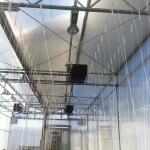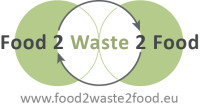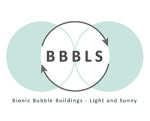
Technology
Greenhouse horticulture is the ideal sector to convert local organic waste into food. THE difference with other sectors is that horticulture needs CO2 to stimulate plant growth, while other industries emit CO2. There is a big opportunity for the greenhouse sector to obtain local organic waste, and put this into use with good businesses advantage. However: greenhouses have poor energy performance and a high carbon footprint. The waste problem, clean water shortages, the lack of fertile lands, the pollution that is part of agriculture, and global warming, etc. makes it necessary and more profitable to close material cycles locally.
Our project uses organic waste as valuable input for a closed-loop process in which we produce crops. We will supply Food2Waste2Food installations: integrated waste equipment with an integrated greenhouse that enables zero carbon footprints for food production.
Food2Waste2Food physically integrates:
- Source separated household and commercial food waste: A pre-treatment plant grinds, separates plastics and makes a slurry out of the food.
- The digester: The substrate is digested to biogas and digestate. The biogas is burnt at correct temperature enabling flue-gas to be released in the greenhouse environment directly for fertilising atmosphere with CO2.
- Digestate: is separated using a decanter centrifuge. The dry fibrous fraction is used to produce a mushroom compost. The spent mushroom compost is converted by vermicomposting to produce a potting substrate for plants. Mushrooms are grown under plants in the greenhouse. The liquid fraction of the digestate is cleaned and used for irrigation and fertilisation of plants in the greenhouse.
- Greenhouse: An advanced energy efficient greenhouse that uses innovative forms of insulation and cooling, and in fact is energy producing. More info on the website of BBBLS: www.bbbls.net
 We can control the mass and energy flow and model the carbon, nitrogen and phosphorus cycles. Clean energy & water are extra benefits. Our activity reduces the negative environmental impact of organic waste treatment and food production in greenhouses considerably. We strive to a minimal input of non-local or non-renewable resources by substituting these with local waste. We will reuse all the water in the process; our sealed greenhouse recovers and reuses this water. We need no artificial fertilisers. Eg. our phosphate fertiliser use goes down with 100%. We do NOT need any fossil fuels.
We can control the mass and energy flow and model the carbon, nitrogen and phosphorus cycles. Clean energy & water are extra benefits. Our activity reduces the negative environmental impact of organic waste treatment and food production in greenhouses considerably. We strive to a minimal input of non-local or non-renewable resources by substituting these with local waste. We will reuse all the water in the process; our sealed greenhouse recovers and reuses this water. We need no artificial fertilisers. Eg. our phosphate fertiliser use goes down with 100%. We do NOT need any fossil fuels.




